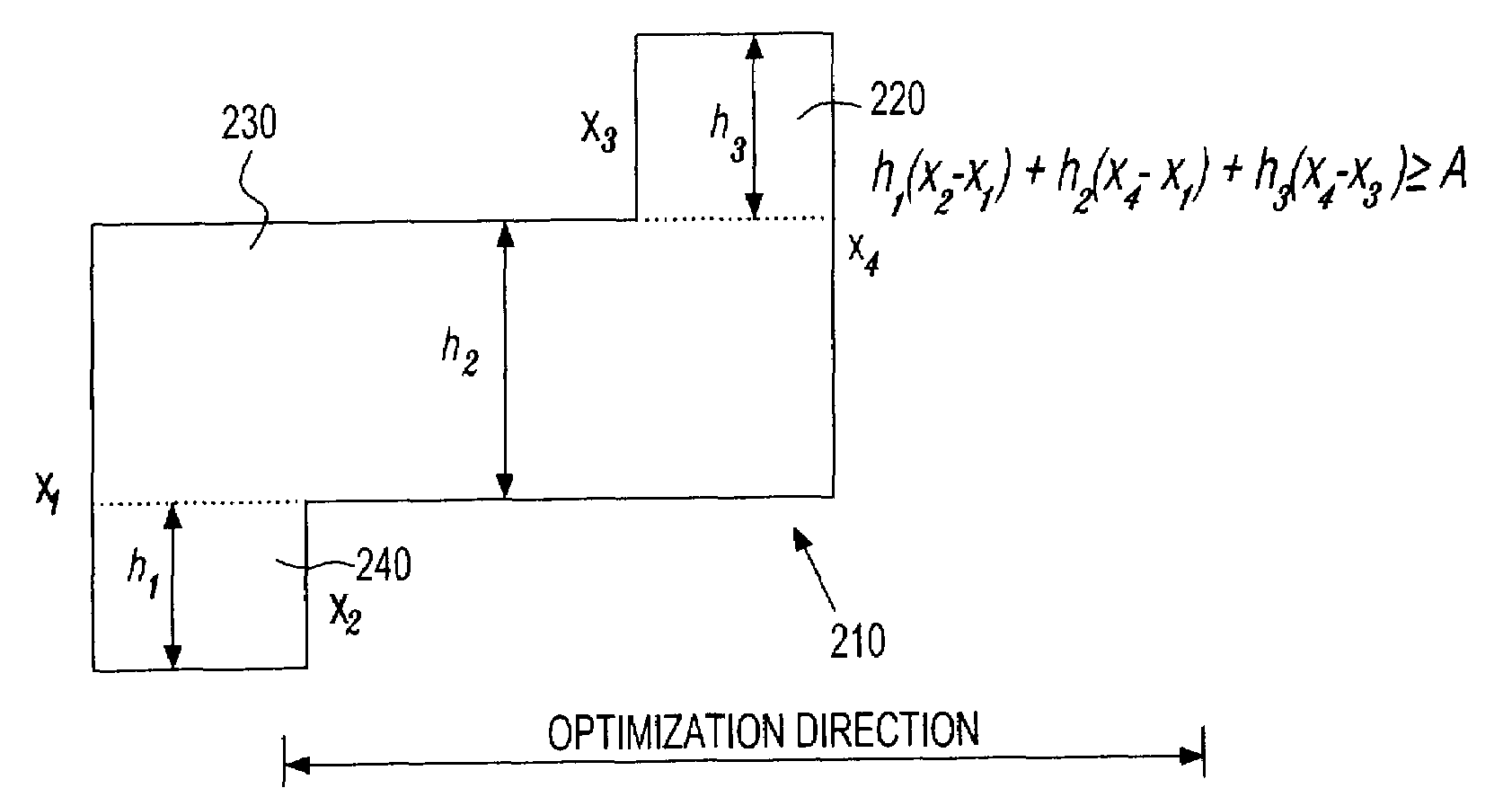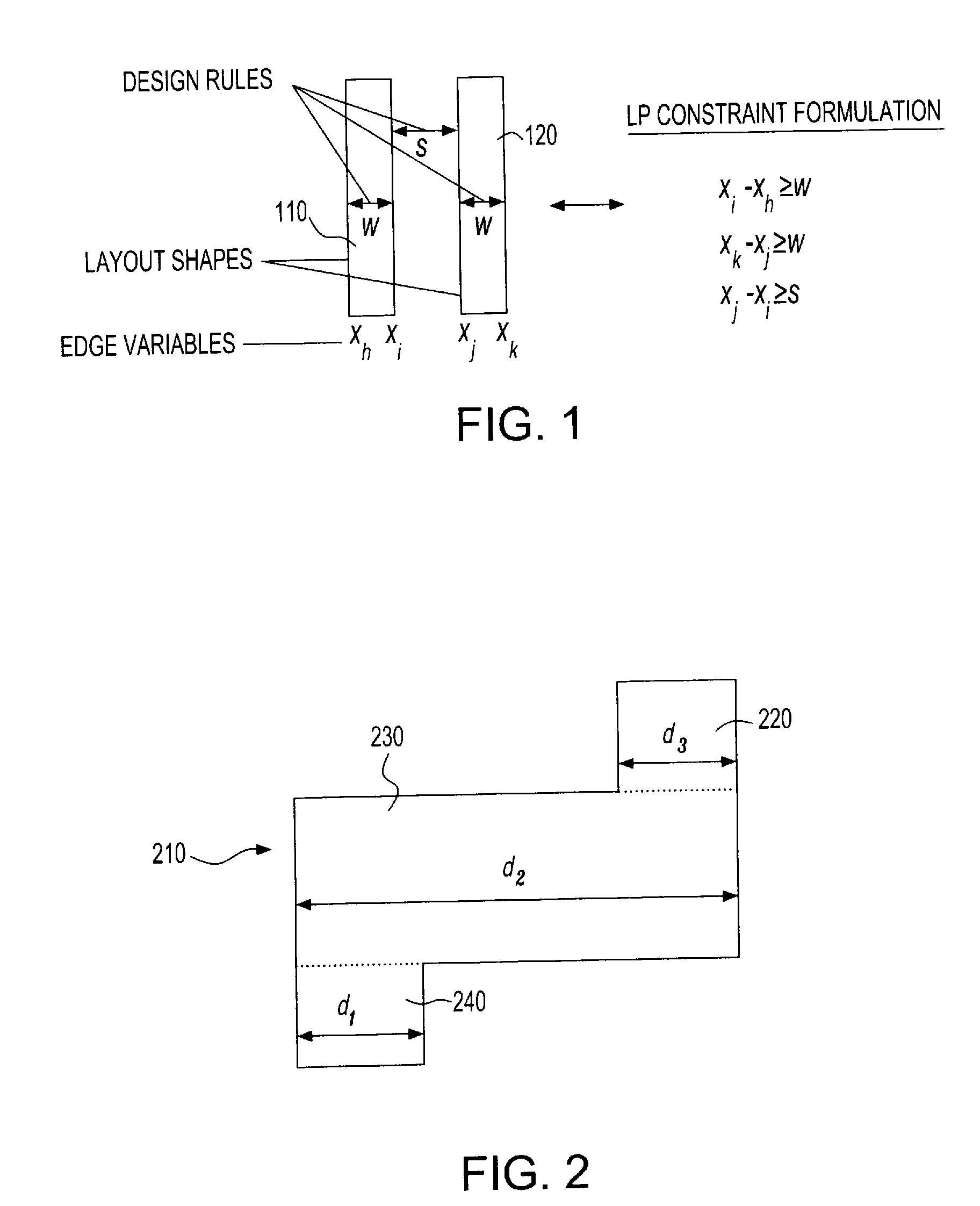Polygonal area design rule correction method for VLSI layouts
a polygonal area and layout technology, applied in computer aided design, program control, instruments, etc., can solve problems such as inadvertently disrupting the automatic or automated design layout, and inability to meet the requirements of the design process
- Summary
- Abstract
- Description
- Claims
- Application Information
AI Technical Summary
Benefits of technology
Problems solved by technology
Method used
Image
Examples
Embodiment Construction
[0024]The inventive method and system set forth and described herein corrects for design rules violations in VLSI design layout modifications, migrations, compactions, etc. The figures and descriptions, however, are intended only as examples, are not exclusive, and should not be interpreted to limit the scope of the invention in any way. The invention is directed to VLSI circuit design processes and automatic design rule correction that includes first finding design rule violations, and then automatically correcting or modifying the design layout to accommodate, correct for, or obviate the design rule violations.
[0025]The inventive method operates in accordance with constraint-based legalization. For example, a first method embodiment corrects for minimum / maximum polygonal area violations while concurrently correcting or preventing most other design rule violation types arising in a migration or compaction process. The physical layout edges are represented as variables, and the desi...
PUM
 Login to View More
Login to View More Abstract
Description
Claims
Application Information
 Login to View More
Login to View More - R&D
- Intellectual Property
- Life Sciences
- Materials
- Tech Scout
- Unparalleled Data Quality
- Higher Quality Content
- 60% Fewer Hallucinations
Browse by: Latest US Patents, China's latest patents, Technical Efficacy Thesaurus, Application Domain, Technology Topic, Popular Technical Reports.
© 2025 PatSnap. All rights reserved.Legal|Privacy policy|Modern Slavery Act Transparency Statement|Sitemap|About US| Contact US: help@patsnap.com



